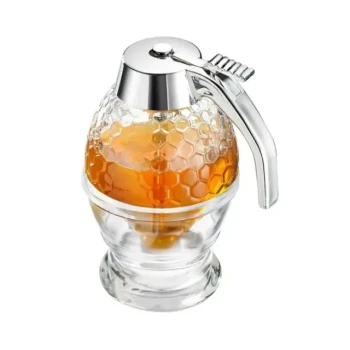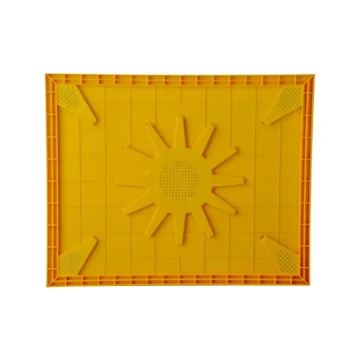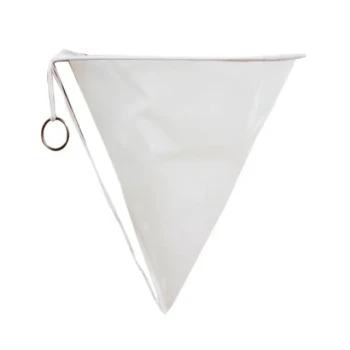At its core, a queen excluder is a selective barrier inside a beehive. It is a perforated sheet, typically made of metal or plastic, with openings large enough for worker bees to pass through but too small for the larger queen and drones. Its primary function is to confine the queen to the lower section of the hive, known as the brood chamber, preventing her from laying eggs in the upper boxes, or honey supers.
The central purpose of a queen excluder is to enforce a separation between the queen's nursery and the hive's pantry. This ensures honey intended for harvest remains free of eggs and larvae, simplifying extraction and guaranteeing a "clean" product.
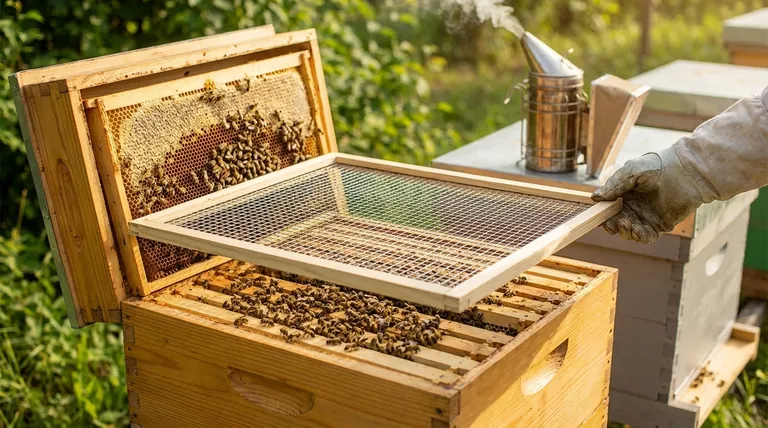
How a Queen Excluder Functions
A queen excluder operates on a simple but effective principle of physical size difference. Understanding its mechanics and placement is key to using it correctly.
The Core Principle: Size Matters
A honey bee queen has a larger thorax and abdomen than the worker bees she produces. The slots or holes in a queen excluder are engineered to this specific tolerance.
Worker bees can easily squeeze through to deposit nectar in the honey supers. The queen, however, is physically blocked from moving into the upper parts of the hive. Drones (male bees) are also too large to pass through this barrier.
Strategic Placement in the Hive
The queen excluder is placed directly on top of the uppermost brood chamber, the area designated for raising young bees.
Any boxes placed above the excluder are called honey supers. By installing the excluder, the beekeeper creates a queen-free zone dedicated solely to honey storage.
The Primary Goal: Separating Brood from Honey
The decision to use a queen excluder revolves around hive management and the desired quality of the honey harvest. It imposes an intentional order on the colony's natural instincts.
Protecting the Honey Harvest
Without an excluder, a queen may travel into the honey supers and lay eggs in the wax honeycomb cells.
This creates a "brood-filled" frame where honey is stored right alongside developing bee larvae. A queen excluder prevents this, ensuring that honey frames contain only honey, which is critical for clean and efficient extraction.
Organizing the Hive
By confining the queen, the excluder also concentrates brood-rearing activities. The brood nest, where the queen lays eggs and workers store pollen, is kept neatly in the lower boxes.
This creates a predictable hive structure that can make inspections easier for the beekeeper.
Understanding the Trade-offs
The use of queen excluders is a subject of debate among beekeepers, with less than half choosing to use them. The decision involves weighing the benefits of convenience against potential impacts on the colony.
The Argument FOR Excluders: Purity and Simplicity
Beekeepers who use excluders prioritize a clean honey harvest and a highly organized hive. It removes the guesswork during honey extraction, as they know any frame above the excluder is free of brood.
This method simplifies management, especially for commercial operations or beginners who want a clear division within the hive.
The Argument AGAINST Excluders: A Barrier to Flow
Opponents argue that an excluder is an unnatural barrier that can hinder the movement of worker bees, potentially slowing down honey production. Forcing bees through the narrow slots may also cause minor damage to their wings over time.
Furthermore, it can sometimes create a "honey-bound" brood nest, where workers store so much nectar below the excluder that the queen runs out of space to lay eggs, which can increase the colony's instinct to swarm.
Making the Right Choice for Your Apiary
The decision to use a queen excluder depends entirely on your beekeeping philosophy and goals. There is no single correct answer.
- If your primary focus is maximum honey purity and ease of extraction: An excluder is a highly effective tool that guarantees brood-free honey supers.
- If your primary focus is a more naturalistic, hands-off approach: You will likely choose to forgo an excluder, allowing the queen to roam freely as she would in the wild.
- If you are a beginner seeking to simplify hive management: Using an excluder can help you easily distinguish between the brood nest and honey storage areas.
Ultimately, understanding the function and impact of a queen excluder empowers you to manage your hives in a way that best aligns with your objectives.
Summary Table:
| Purpose | Function | Key Benefit |
|---|---|---|
| Separate Brood & Honey | Confines the queen to the brood chamber. | Guarantees brood-free honey supers for a clean harvest. |
| Organize the Hive | Creates a distinct queen-free zone for honey storage. | Simplifies hive inspections and management. |
| Control Honey Purity | Prevents eggs/larvae in honeycomb cells. | Makes honey extraction more efficient and straightforward. |
Ready to simplify your hive management and ensure a pure honey harvest?
As a commercial beekeeper or equipment distributor, you need reliable, high-quality supplies. HONESTBEE supplies durable queen excluders and a full range of beekeeping equipment designed for the demands of commercial apiaries and wholesale operations.
Contact our expert team today to discuss your wholesale needs and discover how our equipment can boost your operational efficiency and honey yield.
Visual Guide
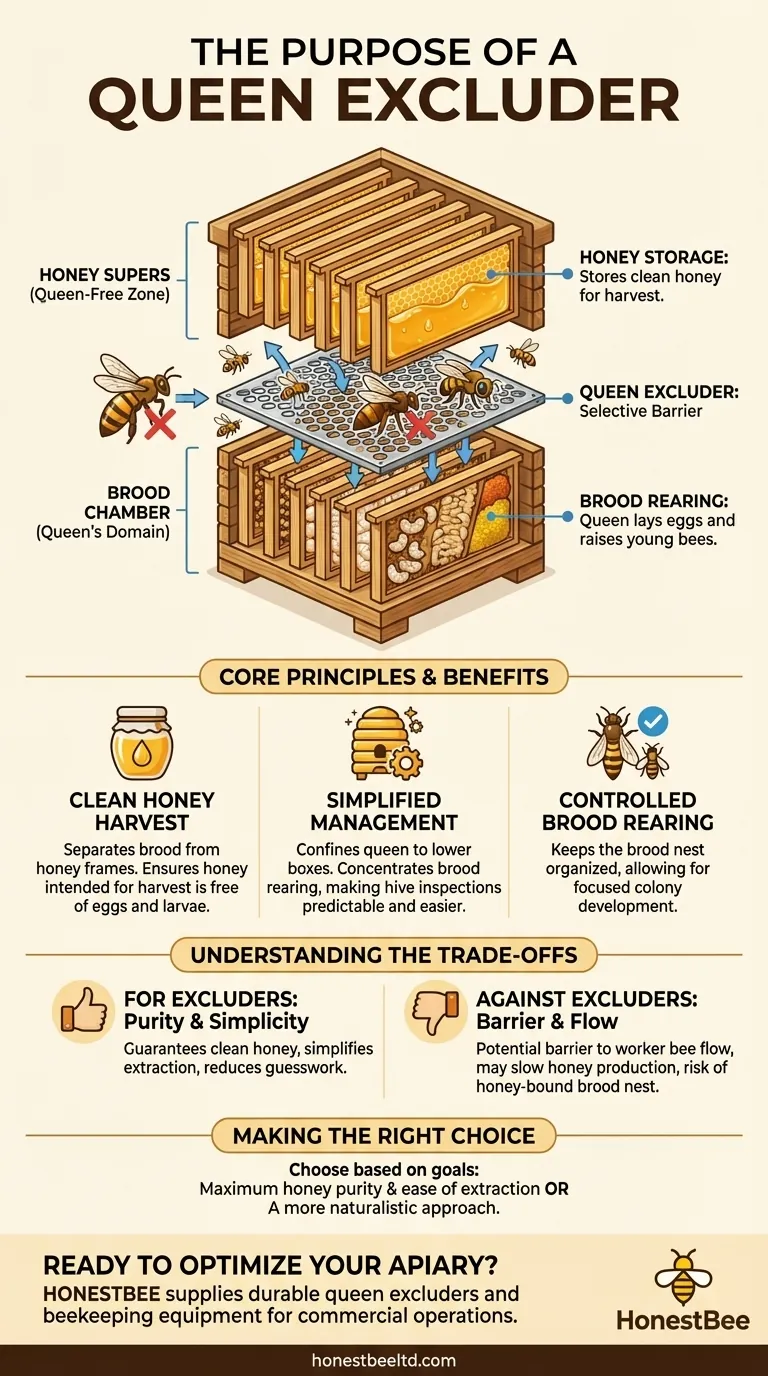
Related Products
- Premium Wood Framed Metal Wire Queen Bee Excluder
- Professional Plastic Queen Excluder for Modern Beekeeping
- High Performance Plastic Queen Excluder for Beekeeping and Apiary Management
- Metal Queen Bee Excluder for Beekeeping
- Plastic Queen Bee Excluder for Bee Hive Wholesale
People Also Ask
- Do I really need a queen excluder? A Guide to Maximizing Your Honey Harvest Efficiency
- Where should a queen excluder be placed in a beehive? The Key to Hive Organization
- Can a queen get through a queen excluder? A Guide to Preventing Hive Failures
- What are the advantages of using queen excluders? Boost Honey Production & Hive Management
- What makes polyurethane foam environmentally friendly? The Surprising Benefits of a Durable, Inert Material















